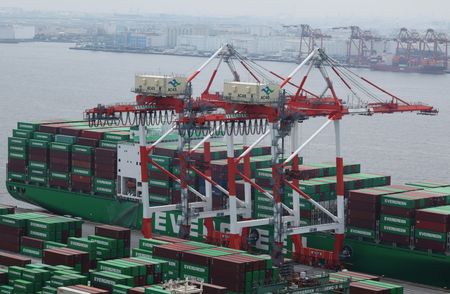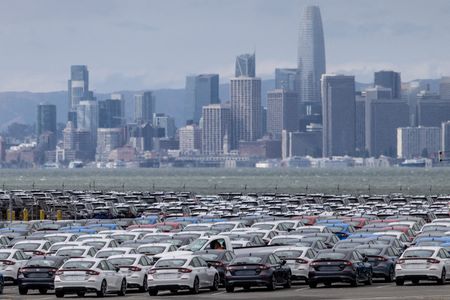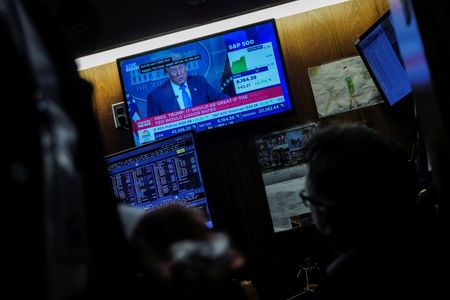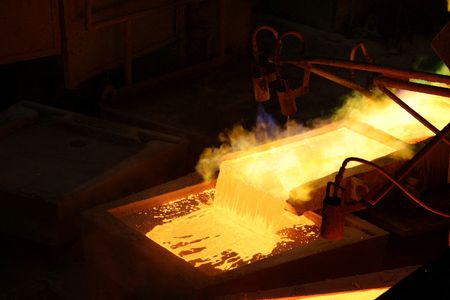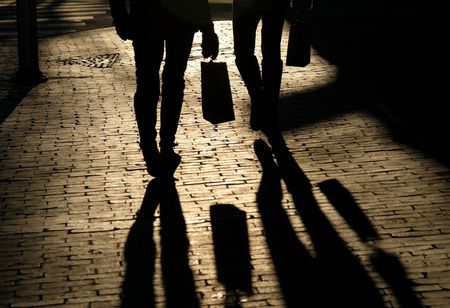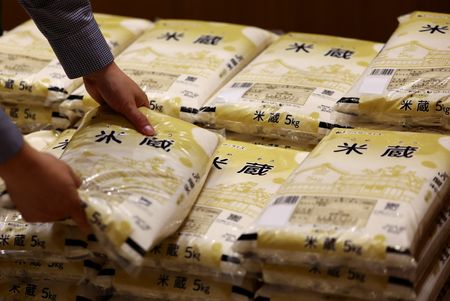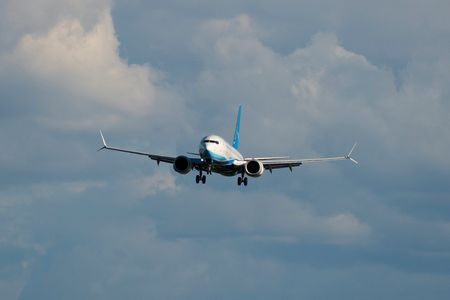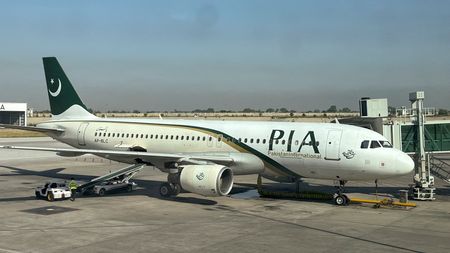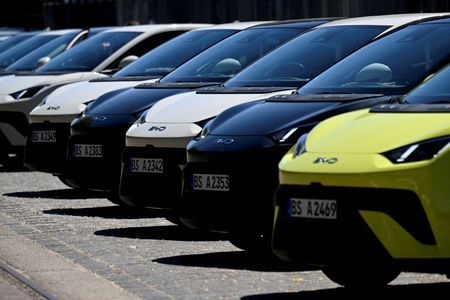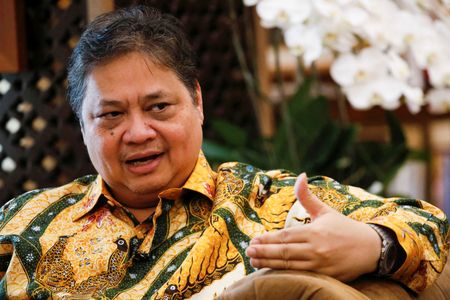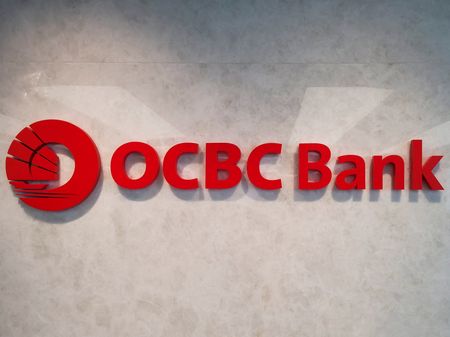By David Lawder, Andrea Shalal and Timothy Aeppel
WASHINGTON (Reuters) -U.S. President Donald Trump’s latest tariff delay provided some hope to major trade partners Japan, South Korea and the European Union that deals to ease duties could still be reached, while bewildering some smaller exporters such as South Africa and leaving companies with no clarity on the path forward.
Trump’s form letters to 14 countries informing them of planned tariff rates of 25% to 40% provided what he called a final warning on his “reciprocal” tariffs, while pushing back Wednesday’s previous deadline to August 1, a date he said on Tuesday was final, declaring: “No extensions will be granted.”
The move reflects Trump’s frustration with trade negotiations that are proving lengthier and more complicated than the “90 deals in 90 days” that he expected, trade experts and administration officials say.
The president, who announced on Tuesday a 50% tariff on imported copper and said long-threatened levies on semiconductors and pharmaceuticals were coming soon, said he has long favored simple tariffs over tedious trade talks that often involve red lines for some countries and their own requests for U.S. concessions.
Japanese Prime Minister Shigeru Ishiba focused on the positive, saying his government would press ahead with negotiations toward a deal that “benefits both countries, while protecting Japan’s national interest.”
Facing a 25% general U.S. tariff, Japan wants relief for its export-dependent auto industry from Trump’s separate 25% automotive tariffs. It also has resisted demands for increased purchases of American rice.
Japan, once viewed as an early favorite for a deal, faces an upper house election on July 20 and too many concessions could put Ishiba’s ruling Liberal Democratic Party at risk.
“These countries are not folding. They’re not giving him what he wants, so he’s added another threat,” said William Reinsch, a former U.S. Commerce Department official who is a senior trade adviser at the Center for Strategic and International Studies. “He’s put a new number to it and extended the deadline.”
South Korea, where President Lee Jae Myung has been in office less than a month, also pledged to intensify talks for “a mutually beneficial result” while analysts warned he would not be “a pushover” for Trump or put South Korea at a disadvantage to Japan.
Stephen Miran, chairman of the White House’s Council of Economic Advisers, told Fox News on Tuesday more deals were possible even before the end of this week, as long as countries made concessions deemed worthy by Trump.
India, in particular, looked close to a deal, but prospects were less clear for smaller countries such as South Africa, Thailand and Malaysia, which face tariffs of 30%, 36% and 25%, respectively.
South African President Cyril Ramaphosa pushed back on Trump’s 30% tariff rate, calling it out of sync with an average 7.6% South African tariff rate. But he instructed his negotiators to “urgently engage” with Trump’s team on a framework first submitted by the South African side on May 20.
The Trump administration’s negotiating time may be eaten up with larger partners, such as the EU, which did not get a warning letter or a change to its prescribed 20% tariff rate, double the 10% baseline.
Sources familiar with the EU talks have told Reuters a deal could involve carve-outs for aircraft and parts, medical equipment and alcoholic spirits. They say the EU also wants certain automakers to export to the U.S. at rates below the 25% auto tariff.
Such a deal would be similar to a framework agreement with the United Kingdom that had carve-outs for autos, steel and aircraft engines.
FINAL SQUEEZE
After announcing his global “Liberation Day” tariffs of 11%-50% in early April, Trump quickly dialed them back to 10% for most countries amid bond market turmoil to buy time for negotiations to lower foreign tariffs and trade barriers.
Ryan Majerus, another former U.S. Commerce official, said Trump’s three-month pause had not produced the desired results, and now the president was seeking to maximize his negotiating leverage.
“They’re going to pressure-test things and see how far they can go, particularly for countries where there hasn’t been any movement in the talks,” said Majerus, who is a partner at Washington’s King and Spalding law firm.
Steadier markets and strong economic data give Trump some room to maneuver, but time is short and “the more granular you get in negotiating these things, the tougher the sledding gets,” he added.
The deadline extension provides no relief to companies that are trying to keep up with Trump’s tariffs. Executives say the rapidly shifting tariff landscape has paralyzed decision-making as they try to adjust their supply chains and cost structures to avoid tariff-induced price hikes.
“No company can really prepare for this,” said Hubertus Breier, chief technology officer for Germany’s Lapp Holdings, a family-owned maker of cables, wires and robotics for factories. “We are already incurring losses simply because of the uncertainty of the daily changing situation.”
Lapp has difficult choices – absorb additional costs or pass them on to customers. Assuming permanently higher prices and costs, however, could threaten its long-term existence, Breier added.
DeMejico, a family business in Valencia, California with a plant in Mexico that builds traditional Spanish and Mexican-style furniture, is struggling to adapt to Trump’s 50% tariffs on imported steel. Robert Luna, the company’s president, said the firm is importing heavy steel latches, hinges and trim parts separately to simplify the tariff calculation process and installing them at its Los Angeles-area showroom.
The tariffs and higher U.S. wage costs are already inflating prices, and DeMejico faces further cost increases on furniture if Trump hits Mexico with a reciprocal tariff, Luna said.
“It’s hard to do anything about this as a small business owner, so I just try to be stoic and see what happens,” Luna said, adding: “My biggest worry is just keeping the company alive.”
Luna said he thought the Trump administration was “setting up the foundation to train people to pay tariffs.”
(Reporting by David Lawder and Andrea Shalal in Washington, Timothy Aeppel in New York and Max Schwarz and Tilman Blasshofer in Frankfurt; additional reporting by Doina Chiacu in Washington; Writing by David Lawder; Editing by Paul Simao)

